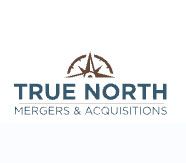The Impact of Mergers & Acquisitions on Corporate Culture

True North Mergers & Acquisitions
December 12, 2023

While the success of a merger & acquisition (M&A) is certainly economic and strategic, it is also heavily influenced by how well companies manage their cultures. Evenmore, one study suggests that as many as 30% of integrations fail because of cultural conflicts.
M&A success may not entirely hinge on cultural harmony, but the data shows it has an influence on it. To understand its impact, we must first reconsider the complicated nature of corporate culture.
The Complex Nature of Corporate Culture
When people talk about company culture, they generally refer to how things are done, how people behave, what they value, and their shared beliefs. But that definition of culture is vague and oversimplified when considering that people rarely have identical views of culture.
To further complicate matters, culture is often intangible. How people interact with each other, work in teams, and exchange energies cannot be documented. It just “is.” That is why organizations need to understand organizational and local culture dynamics.
To better understand culture, we must first uncover how it impacts businesses at the individual, team, and organizational levels.
Organizational Culture: Three Levels of Impact
Let’s break down the roles of culture at the individual, team, and organizational levels:
Individual: To understand culture at the individual level, consider the guiding force behind each team member’s behavior. You can’t necessarily touch it, yet it’s genuine in its ability to influence profitable and efficient behaviors.
Employees, influenced by this culture, learn how to interact with one another, creating an environment where trust and positive energies coexist. In other words, it's not just about getting the job done; it's about how people feel at work.
Team: At the team level, culture shapes how members interact and work together. A strong culture leads to more effective collaboration, where everyone feels heard and valued. It also equips teams with strategies for resolving conflicts constructively rather than letting disputes hinder progress. Furthermore, a well-aligned team culture keeps everyone engaged and committed to shared goals, ensuring that different perspectives are welcomed.
Organizational: At a corporate level, culture impacts the broader aspects of the company, shaping its brand image and market identity. In simpler terms, corporate culture influences how partners and customers perceive the company. Furthermore, it shapes policies and affects the organization's mission.
Creating a Shared Culture
Creating a shared culture is complex and requires careful planning and execution. Here are a few steps to get you started:
Engage Early: Begin cultural assessment activities as soon as the M&A is underway, ideally several months before the deal is finalized. Activities may include conducting surveys, interviews, and focus groups to understand the existing cultural attributes of both organizations.
Develop a Shared Vision: Initiate workshops and strategy sessions involving leaders from both organizations to develop a shared vision and values. Be sure to document it.
Detailed Planning: Develop a detailed integration plan with specific cultural goals, including the CEO’s direct involvement in communication and reinforcement strategies.
Maintain Transparency: Establish regular communication channels like newsletters, town halls, and Q&A sessions. Organizations may benefit from creating a FAQ document that addresses employee concerns.
Assess: Conduct an in-depth cultural assessment within the first six months of the merger. Use this data to create an action plan that addresses cultural differences and outlines steps for uniting team members under a shared vision.
Continue Reviewing: Encourage employee feedback and regularly review it to assess your progress. This should involve repeated assessments, surveys, and even third-party audits.
Merge with Confidence: True North's Expert M&A Guidance
At True North Mergers & Acquisitions, we're committed to guiding you through a seamless M&A process tailored to your business needs and personal goals. If you're gearing up for the future and need strategic insights to help you navigate, contact us now. Your first step toward a successful merger or acquisition starts here.
Subscribe to our Newsletter
Sign up for the latest industry insights from True North Mergers & Acquisitions.

SELLING A BUSINESS
How Do I Get My Tech Business Ready to Sell? Understand These Factors Before You Sell Your Tech Business

PLANNING
How to Jumpstart the Planning Process Following a Process Ensures Positive Results

SELLING A BUSINESS
If You Don’t Uncover the Skeletons in Your Closet, Your Buyer Will Don’t Miss This Important Step in Selling Your Business


